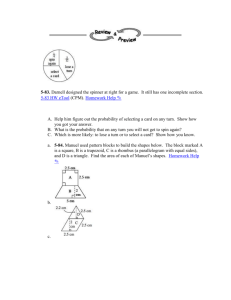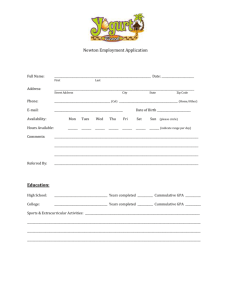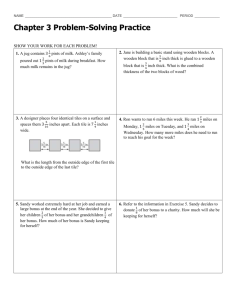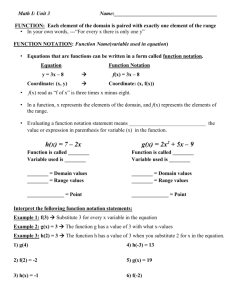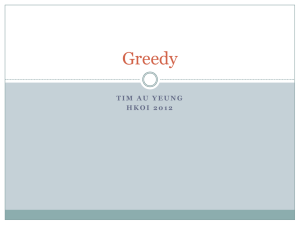Read As PDF - Dairy Foods Magazine
advertisement
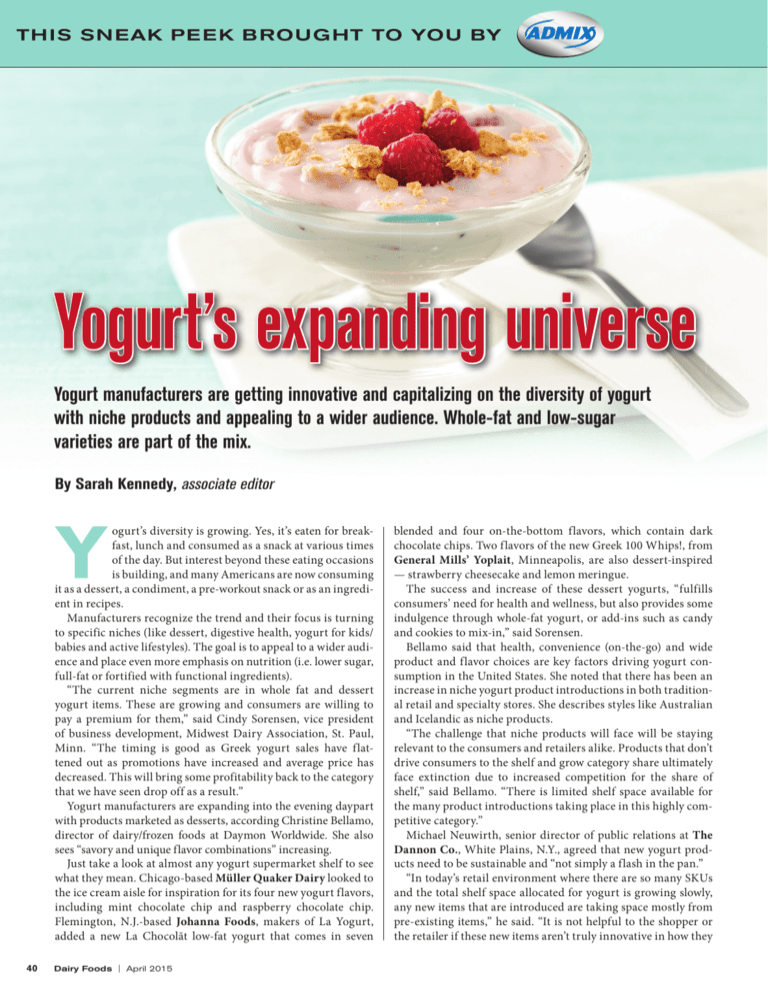
TH I S S N EAK P E E K B R O U G HT TO YO U BY Yogurt’s expanding universe Yogurt manufacturers are getting innovative and capitalizing on the diversity of yogurt with niche products and appealing to a wider audience. Whole-fat and low-sugar varieties are part of the mix. By Sarah Kennedy, associate editor ogurt’s diversity is growing. Yes, it’s eaten for breakfast, lunch and consumed as a snack at various times of the day. But interest beyond these eating occasions is building, and many Americans are now consuming it as a dessert, a condiment, a pre-workout snack or as an ingredient in recipes. Manufacturers recognize the trend and their focus is turning to specific niches (like dessert, digestive health, yogurt for kids/ babies and active lifestyles). The goal is to appeal to a wider audience and place even more emphasis on nutrition (i.e. lower sugar, full-fat or fortified with functional ingredients). “The current niche segments are in whole fat and dessert yogurt items. These are growing and consumers are willing to pay a premium for them,” said Cindy Sorensen, vice president of business development, Midwest Dairy Association, St. Paul, Minn. “The timing is good as Greek yogurt sales have flattened out as promotions have increased and average price has decreased. This will bring some profitability back to the category that we have seen drop off as a result.” Yogurt manufacturers are expanding into the evening daypart with products marketed as desserts, according Christine Bellamo, director of dairy/frozen foods at Daymon Worldwide. She also sees “savory and unique flavor combinations” increasing. Just take a look at almost any yogurt supermarket shelf to see what they mean. Chicago-based Müller Quaker Dairy looked to the ice cream aisle for inspiration for its four new yogurt flavors, including mint chocolate chip and raspberry chocolate chip. Flemington, N.J.-based Johanna Foods, makers of La Yogurt, added a new La Chocolãt low-fat yogurt that comes in seven Y 40 Dairy Foods | April 2015 blended and four on-the-bottom flavors, which contain dark chocolate chips. Two flavors of the new Greek 100 Whips!, from General Mills’ Yoplait, Minneapolis, are also dessert-inspired — strawberry cheesecake and lemon meringue. The success and increase of these dessert yogurts, “fulfills consumers’ need for health and wellness, but also provides some indulgence through whole-fat yogurt, or add-ins such as candy and cookies to mix-in,” said Sorensen. Bellamo said that health, convenience (on-the-go) and wide product and flavor choices are key factors driving yogurt consumption in the United States. She noted that there has been an increase in niche yogurt product introductions in both traditional retail and specialty stores. She describes styles like Australian and Icelandic as niche products. “The challenge that niche products will face will be staying relevant to the consumers and retailers alike. Products that don’t drive consumers to the shelf and grow category share ultimately face extinction due to increased competition for the share of shelf,” said Bellamo. “There is limited shelf space available for the many product introductions taking place in this highly competitive category.” Michael Neuwirth, senior director of public relations at The Dannon Co., White Plains, N.Y., agreed that new yogurt products need to be sustainable and “not simply a flash in the pan.” “In today’s retail environment where there are so many SKUs and the total shelf space allocated for yogurt is growing slowly, any new items that are introduced are taking space mostly from pre-existing items,” he said. “It is not helpful to the shopper or the retailer if these new items aren’t truly innovative in how they develop the yogurt category by building frequency and average weight of purchase.” Bellamo said, “Yogurt manufacturers are all seeking the next big idea in the yogurt category. In order to continue to drive per capita, yogurt consumption will need new types, styles and forms of yogurt to capture the attention of today’s consumers.” Yogurt companies are listening and answering the call. New product introductions for yogurt account for 9.7% of volume through early 2015, illustrating strong innovation, based on a retail sales report from Dairy Management Inc. (DMI) using data from Information Resources Inc. (IRI), Chicago. Much credit has been given to Greek yogurt for shining a spotlight on the yogurt industry over the last several years, but things are changing. Greek yogurt sales by volume have cooled down over the last several months and that trend continues with sales up only 3% through January, per DMI’s report. With the novelty of Greek yogurt wearing off, other styles are grabbing attention, like full-fat and brands marketed as Australian and European, which are typically described as thick/ very creamy, high in protein, blended and sometimes sweeter than Greek yogurt. Whole-fat yogurt is off to a strong start in 2015, posting double-digit volume growth. Sales of fat-free items are struggling, down 7% in 2015, according to DMI’s report. Dairy processors recognize these trends and have obliged. WhiteWave Foods, Broomfield, Colo., introduced Yulu, a new full-fat Australian-style yogurt brand, described as “double smoothed.” Stonyfield, Londonderry, N.H., launched an organic whole-milk yogurt brand called Oh My Yog! It’s made with a unique three-layer format — fruit on the bottom, honeyinfused yogurt in the middle and a layer of cream on top. Smári Organics recently added two whole-milk varieties in plain and vanilla flavors. Smári makes organic, Icelandic-style yogurts (a thick, very high-protein yogurt with 20 grams per 6-ounce cup). Diversity is key In order to grow, the yogurt category will need to continue to diversify and appeal to a wider audience, expanding beyond its once predominantly female consumer base, said Daymon’s Bellamo. Many of the yogurt companies Dairy Foods spoke with agree. And this is exactly what companies like Powerful Yogurt, Dannon and Alpina Foods are doing. When Powerful Yogurt, Miami Beach, Fla., was initially introduced in 2013, the product was marketed as a “Greek yogurt for men.” Since then, the company has taken on a broader marketing focus to “people with active lifestyles,” according to Carlos Ramirez, the company’s CEO and founder. The company bucked the traditional 5.3ounce size cup (usually seen with Greek yogurt) to go with an 8-ounce single-serving cup containing 21 grams of protein. Ramirez said the company is very active on social media, Yulu, a new Aussie-style yogurt from WhiteWave Foods, is a fullfat yogurt that is created through a process that the company calls “double smoothed” to make it extra creamy. keeping topics focused on active lifestyles, health, nutrition and working out. The emphasis on high protein is a common theme with these yogurts that are being marketed to men (along with women). Some deem these products as “bro-gurts.” Dannon focused on the high-protein aspect with its new Oikos Triple Zero, a Greek yogurt which contains 15 grams of protein per 5.3-ounce container, and has no added sugar, no artificial sweeteners and no fat. In an effort to engage with a wider audience, Dannon became the official yogurt sponsor of the NFL. “Protein is a nutrient most Americans are looking to consume more of, and yogurt is recognized as a good protein source, particularly Greek yogurt,” said Dannon’s Neuwirth. “While we don’t believe men need their own brand of yogurt today, we have positioned our newest brand offering, Stonyfield’s new Oh My Yog! line follows another growing trend of cream-top yogurts and is also made with whole milk; Powerful Yogurt is targeting those with active lifestyles, emphasizing its 21 gram protein content per 8-ounce container. www.dairyfoods.com 41 ing. Forty-seven percent of yogurt is consumed as a snack. Data from the research firm Nielsen show that only 4% of all snacking occasions go to yogurt. Alpina Foods’ new All Stars yogurt features packaging that’s geared toward a more male crowd. Oikos Triple Zero, with a more balanced appeal for both women and men.” Alpina Foods, Batavia, N.Y., introduced a new product in February targeted at males. Its NBA All-Stars yogurt is a low-fat vanilla-flavored yogurt with a cookie or candy topping. As stated in a press release from the company, the packaging (which pictures current NBA players on it) features toppings that “add a little dunking fun, while appealing to basketball fans of all ages — men and women.” Smári Ásmundsson, founder of Smári Organics, said he prefers to not exclude anyone. The company’s target market is health-conscious men and women. The yogurt is also very high in protein. A 6-ounce cup contains 17 to 20 grams. General Mills’ Yoplait, Minneapolis, has taken a different approach in appealing to a wider audience, and the evidence can be seen with its recent television commercials. “In summer of 2014, we turned on messaging that focused on the all-family appeal of snacking on Yoplait,” said Susan Pitt, marketing manager for Yoplait. “By featuring family consumption in our messaging rotation, including Dad and kids, the business almost immediately saw a turnaround and has been steadily growing ever since.” For example, one commercial features an inside view of the fridge (stocked with Yoplait) showing various family members grabbing different flavors throughout the day. Near the end, just as a boy opens the door to find no more yogurts, his mother sweeps in to restock ock the fridge. The spot also aptly has the song “All Day and All of The Night” from thee The Kinks playing in n the background. The overall message is clear — it’s good for the whole le family, any time of thee day. Pitt also noted that the company has seen n a massive upside in the occasions people choose yogurt ogurt for, particularly around nd snack42 Dairy Foods | April 2015 Investing in yogurt’s future Despite all the innovation and the crowded supermarket yogurt shelves, yogurt consumption is still low in the United States, when compared with other countries. According to Dannon’s Neuwirth, Americans eat less than one cup of yogurt per person per week on average. Compare this to Canada, where it’s nearly double and some European countries, where it’s five times that, according to Dannon. “Consumption is down about 1% nationally versus a year ago,” said Midwest Dairy Association’s Sorensen. “This is response to pricing which is up 3% nationally. Brands make up about 88% of all yogurt volume and have been less impacted by the price increases than private label. Branded sales are about flat versus prior year. Private label is off 6% for the most recent four weeks versus prior year.” Dollar sales for the yogurt category were up 3.2% to $7.3 billion, though unit sales went up just 1.4% to 5.1 billion, according to data from IRI, for the 52 weeks ended Jan. 25, 2015. Dannon is focused on increasing consumption and interest in yogurt. The company started investing in educating health care professionals and other thought leaders about the benefits of eating yogurt every day. “As part of our commitment to the Partnership for a Healthier America, Dannon committed to invest $3 million in nutrition education and research focused on healthy eating habits by 2016,” said Neuwirth. “With more than $1 million invested during year one of the PHA commitment (July 2013-June 2014), Dannon has developed education programs for healthcare providers, such as WIC nutrition counselors and consumers on the benefits of low-fat and nonfat yogurt, and is well on its way to meeting the $3 million goal to support education about better eating habits.” As part of its education campaign, the company created the website www.oneyogurteveryday.com as a tool to learn about the role of yogurt in a healthful diet. More dairy processors and yogurt brands would do well to follow Dannon’s example. Everyone should be educated on the benefits of yogurt. And if this helps to increase the amount of yogurt purchased — it’s a win-win for everyone. There is more online. Go to dairyfoods.com to read about dairy processors’ efforts to limit added sugars in yogurt. Mor More dessert-inspired flavors are showing up in tthe yogurt aisle, with so some companies, like Mü Müller Quaker, positioning its yogurt as a positio health healthier dessert option.
